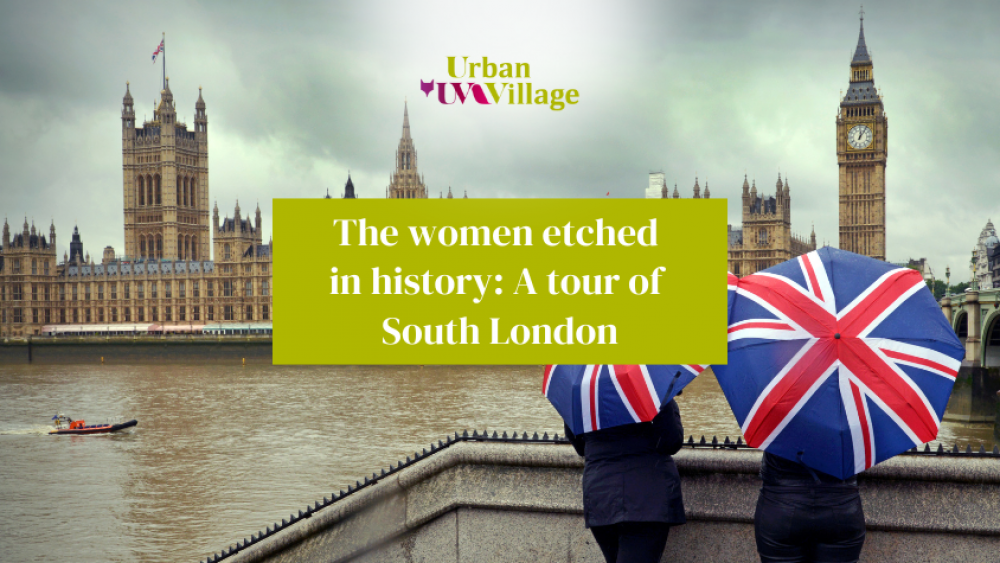Do you know just how many women have made their mark on South London? Throughout history, the area has been home to hundreds of inspirational women that have helped to shape the lives we live today, and have been commemorated through statues, road names and parks.
As an estate agency not only owned by, but made up entirely of women, we’re all about female empowerment. So why not join us for a brief tour of South London and the influential women that are etched in its history?
Catherine Booth (1829-1890)
In Denmark Hill, you will find a statue of Catherine Booth that was erected in 1929. Catherine was a devout evangelist who believed women should have an equal role in the Christian ministry. In 1859, she wrote a seminal pamphlet named ‘Women’s Right to Preach the Gospel’, and quickly became renowned as a prominent voice for social reform, advocating for women’s suffrage, the abolition of child labour, and other social issues.
Married to William Booth, founder of the Salvation Army, Catherine became known as ‘the Mother of the Salvation Army’ and played a pivotal role in the fight for equal rights.
The Windrush overground line
By the end of 2024, an overground line running through South London will be renamed to commemorate the Windrush generation. Passing through areas with strong ties to Caribbean communities to this day - including Dalston Junction, Peckham Rye and West Croydon - the new name recognises the arrival of the HMT Empire Windrush in June 1948, and how the Windrush generation helped to rebuild the country after World War II.
Mona Baptiste and Dame Jocelyn Anita Barrow DBE are just two of the notable women that travelled on the Empire Windrush to start a new life in Britain. Mona quickly became known for her vocals, singing at one of Princess Margaret’s haunts, and Jocelyn became the first black women to be governor of the BBC.
Mary Seacole (1805-1881)
Best known for her work as a nurse in the Crimean War, you will find a statue of Mary Seacole outside of St Thomas’ Hospital in Lambeth. Born in Jamaica, Mary dedicated her life to travelling and helping the sick, using her medical knowledge to treat victims of the cholera epidemic.
Upon refusal from the government to join the Crimean War to help British troops, Mary used her own money to set up “the British Hotel” in the Crimea, allowing her to provide soldiers with much-needed refreshments, food and medical care.
Ada Salter (1866-1942)
Along Bermondsey Wall East, you will find a collection of four statues known as ‘Dr Salter’s Daydream’. The statues depict Dr Alfred and Ada Salter, their daughter Joyce and their cat.
Ada Salter was a social reformer, environmentalist and local politician who became the first female mayor of a London Borough in 1922, and the first Labour woman to be elected as a mayor in Britain. By 1930, the Bermondsey borough had a public health service, palatial baths and wash houses, a slum-clearance and housing programme, playgrounds and thousands of new trees planted. Ada played a key role in improving the welfare and health of those in the area, continuously advocating for greener, healthier urban environments.
Lind Road, Sutton
Just off Carshalton Road in Sutton, you’ll find Lind Road – a street named after the famous 19th century Swedish opera singer, Jenny Lind. Known as the ‘Swedish Nightingale’, Jenny gave her first performance in London on 4th May 1847, which served as a key turning point in her singing career. It was after this that American showman, PT Barnum, approached her with the proposal of a US tour in 1849. The story has since been retold in the widely-known and beloved film, The Greatest Showman, with Jenny Lind being played by Rebecca Ferguson.
Burgess Park, Camberwell
Did you know this popular park in Camberwell was also named after a woman? Built between the 1950s and 1980s, this park used to be home to factories and densely populated streets before it was bombed during World War II. As a result of the Abercrombie plan for open spaces in 1943, the demolished area was transformed into a 56-hectare park, named after Camberwell’s first female mayor in 1945: Jessie Burgess. She is remembered for her dedicated work during the blitz and in support of the creation of green spaces.
South London: Home to powerful women
These are just some of the historical women that have shaped the city we know and love today. At Urban Village, our all-female team might not be making history, but we are dedicated to helping you achieve your goals. Whether you’re looking to sell, let, rent or buy – our team of experts are on-hand to support you on your property journey.
Get in contact with our team, today.
